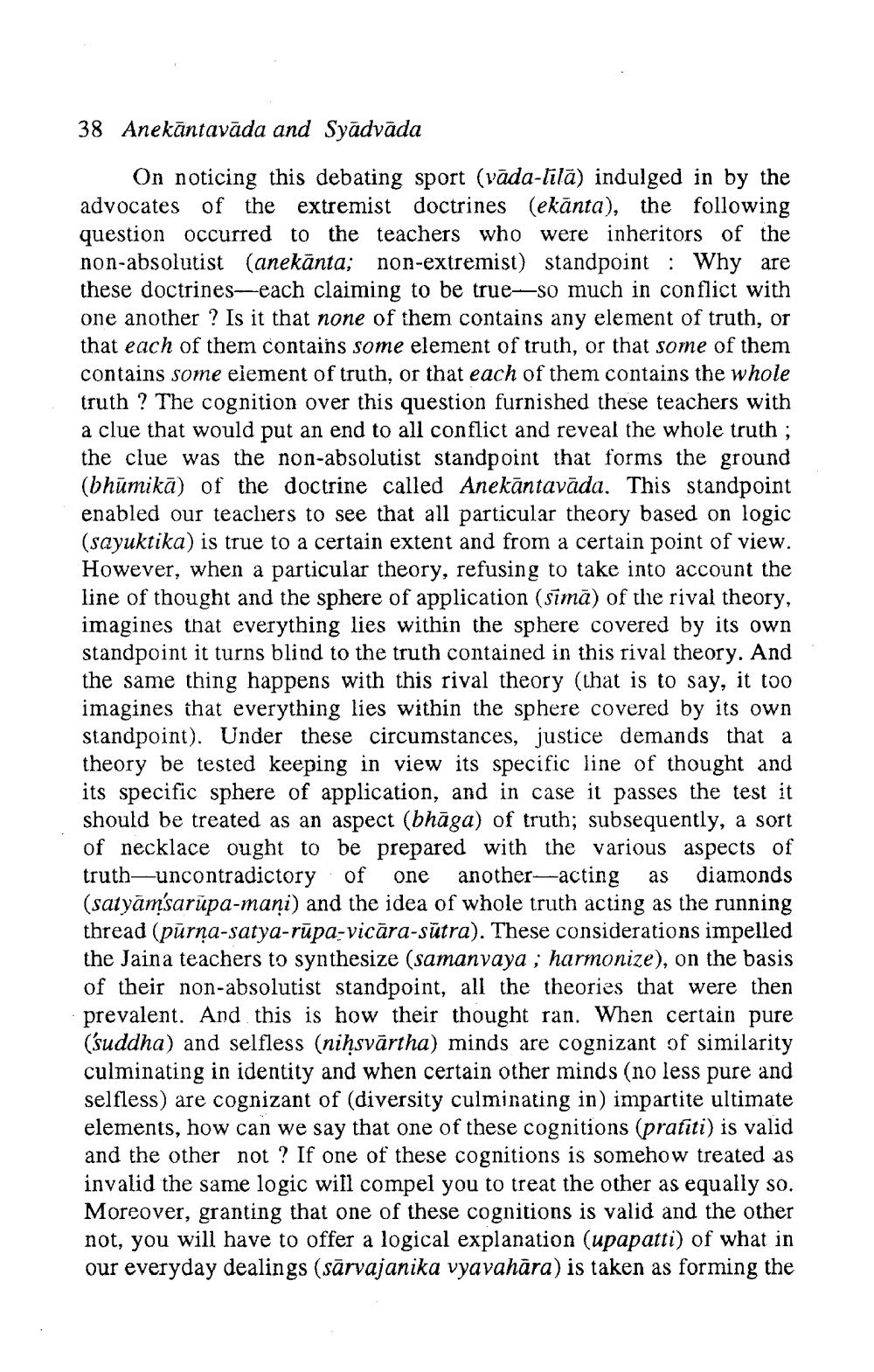________________
38 Anekāntavāda and Syādvāda
On noticing this debating sport (vāda-tilā) indulged in by the advocates of the extremist doctrines (ekānta), the following question occurred to the teachers who were inheritors of the non-absolutist (anekānta; non-extremist) standpoint : Why are these doctrines-each claiming to be true-So much in conflict with one another ? Is it that none of them contains any element of truth, or that each of them contains some element of truth, or that some of them contains some element of truth, or that each of them contains the whole truth ? The cognition over this question furnished these teachers with a clue that would put an end to all conflict and reveal the whole truth; the clue was the non-absolutist standpoint that forms the ground (bhūmikā) of the doctrine called Anekāntavāda. This standpoint enabled our teachers to see that all particular theory based on logic (sayuktika) is true to a certain extent and from a certain point of view. However, when a particular theory, refusing to take into account the line of thought and the sphere of application (sima) of the rival theory, imagines that everything lies within the sphere covered by its own standpoint it turns blind to the truth contained in this rival theory. And the same thing happens with this rival theory (that is to say, it too imagines that everything lies within the sphere covered by its own standpoint). Under these circumstances, justice demands that a theory be tested keeping in view its specific line of thought and its specific sphere of application, and in case it passes the test it should be treated as an aspect (bhāga) of truth; subsequently, a sort of necklace ought to be prepared with the various aspects of truth-uncontradictory of one another-acting as diamonds (satyāmsarūpa-mani) and the idea of whole truth acting as the running thread (pūrņa-satya-rūpa-vicāra-sūtra). These considerations impelled the Jaina teachers to synthesize (samanvaya , harmonize), on the basis of their non-absolutist standpoint, all the theories that were then prevalent. And this is how their thought ran. When certain pure (suddha) and selfless (niņsvārtha) minds are cognizant of similarity culminating in identity and when certain other minds (no less pure and selfless) are cognizant of (diversity culminating in) impartite ultimate elements, how can we say that one of these cognitions (pratiti) is valid and the other not? If one of these cognitions is somehow treated as invalid the same logic will compel you to treat the other as equally so. Moreover, granting that one of these cognitions is valid and the other not, you will have to offer a logical explanation (upapatti) of what in our everyday dealings (sārvajanika vyavahāra) is taken as forming the




